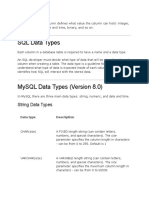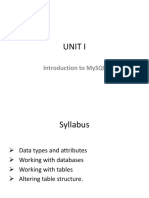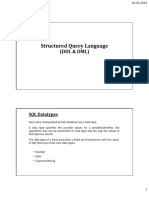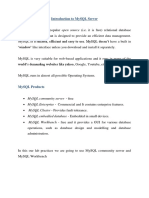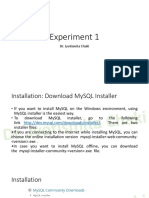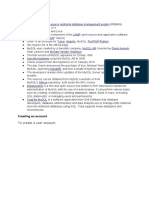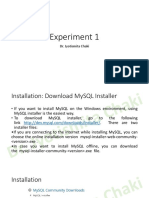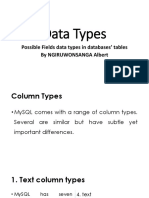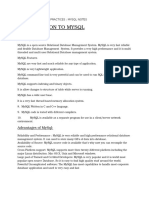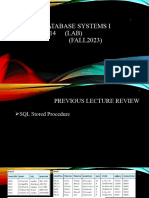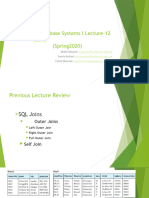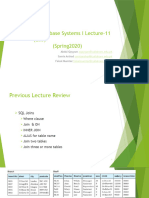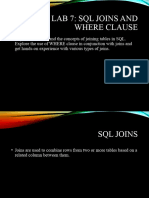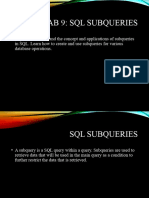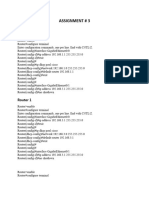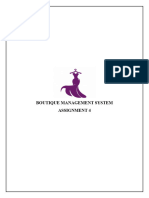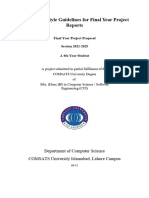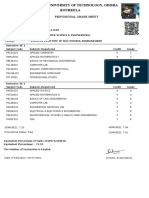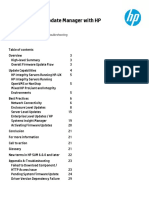0% found this document useful (0 votes)
49 views25 pagesLec3 Lab CSC371 Database Systems
This document provides an overview of SQL data types in Microsoft SQL Server and MySQL. It defines common string, numeric, and date/time data types; their descriptions; storage requirements; and size limits. Examples of data types include char, varchar, int, float, datetime, and enum. The document is intended to review data type concepts for a database systems lecture.
Uploaded by
sp22-bse-097Copyright
© © All Rights Reserved
We take content rights seriously. If you suspect this is your content, claim it here.
Available Formats
Download as PPTX, PDF, TXT or read online on Scribd
0% found this document useful (0 votes)
49 views25 pagesLec3 Lab CSC371 Database Systems
This document provides an overview of SQL data types in Microsoft SQL Server and MySQL. It defines common string, numeric, and date/time data types; their descriptions; storage requirements; and size limits. Examples of data types include char, varchar, int, float, datetime, and enum. The document is intended to review data type concepts for a database systems lecture.
Uploaded by
sp22-bse-097Copyright
© © All Rights Reserved
We take content rights seriously. If you suspect this is your content, claim it here.
Available Formats
Download as PPTX, PDF, TXT or read online on Scribd
/ 25
